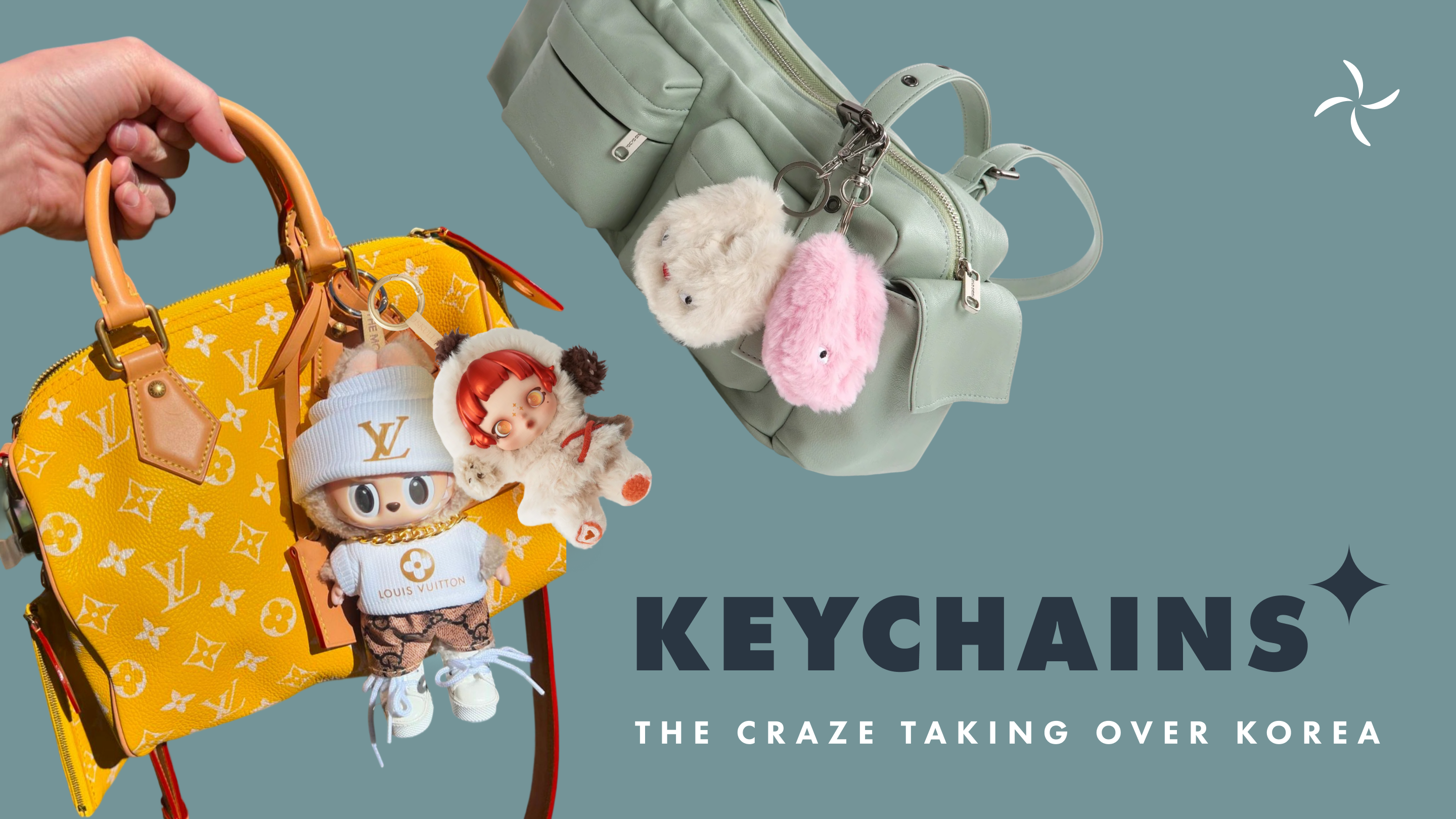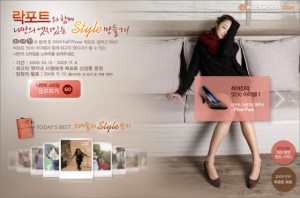In South Korea, keychains are far more than just practical accessories for holding keys, they are cultural artifacts, fashion statements, and emotional tokens. Walk through the bustling streets of Hongdae, the underground shopping arcades in Myeongdong, or the themed stores in Gangnam, and you’ll quickly notice rows upon rows of colorful keychains hanging on display. They range from K-pop idol photo charms to miniature plushies, designer collaborations, and even artisanal creations sold at weekend markets. Entire stores sometimes dedicate a full wall or rotating racks just to these little items, turning shopping for a keychain into an experience in itself.
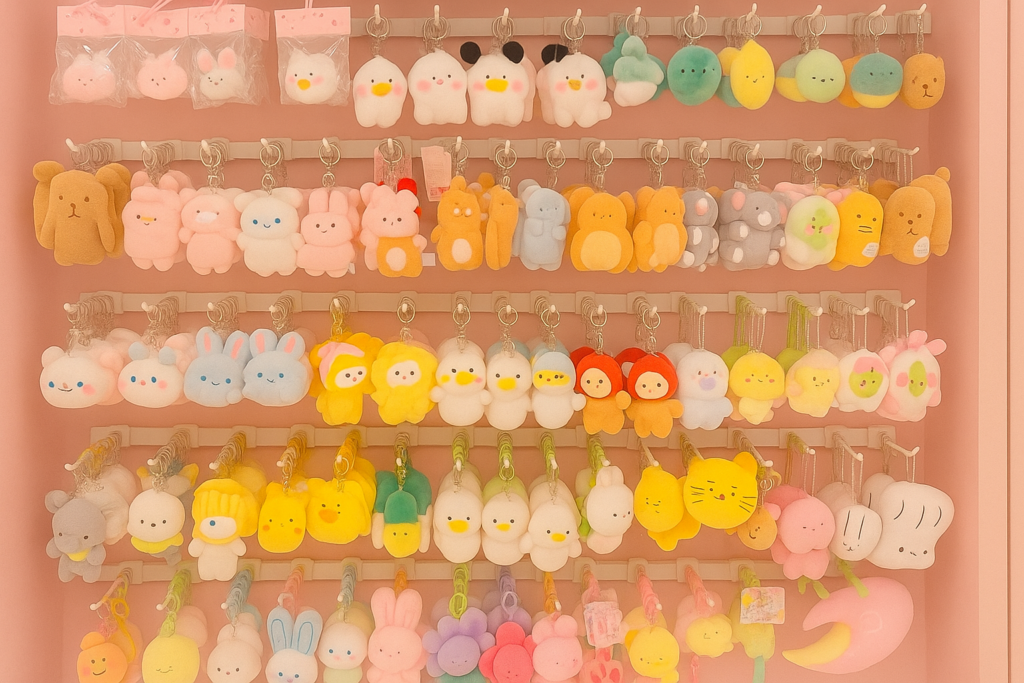
Everyday Collectible
For many Koreans, keychains are a way to express identity in subtle but noticeable ways. Students often decorate their backpacks with cartoon characters from shows like Pororo or Crayon Shin-chan, while university-age fans proudly display acrylic charms of their favorite idols or webtoon characters. Young professionals might opt for sleek leather or minimalist metal designs that fit seamlessly with a polished work look, while still adding a touch of individuality.
The trend of attaching multiple keychains to phones, wallets, or bags has become so widespread that it’s almost a cultural language: you can often guess someone’s interests, fandoms, or personality type just by glancing at the dangling accessories on their bag. In subway trains across Seoul, it’s common to see commuters’ tote bags adorned with keychains that range from playful plush charms to understated monogrammed tags. Each piece is a conversation starter, a subtle nod to one’s tastes, and sometimes even a badge of belonging to a specific group or fandom.
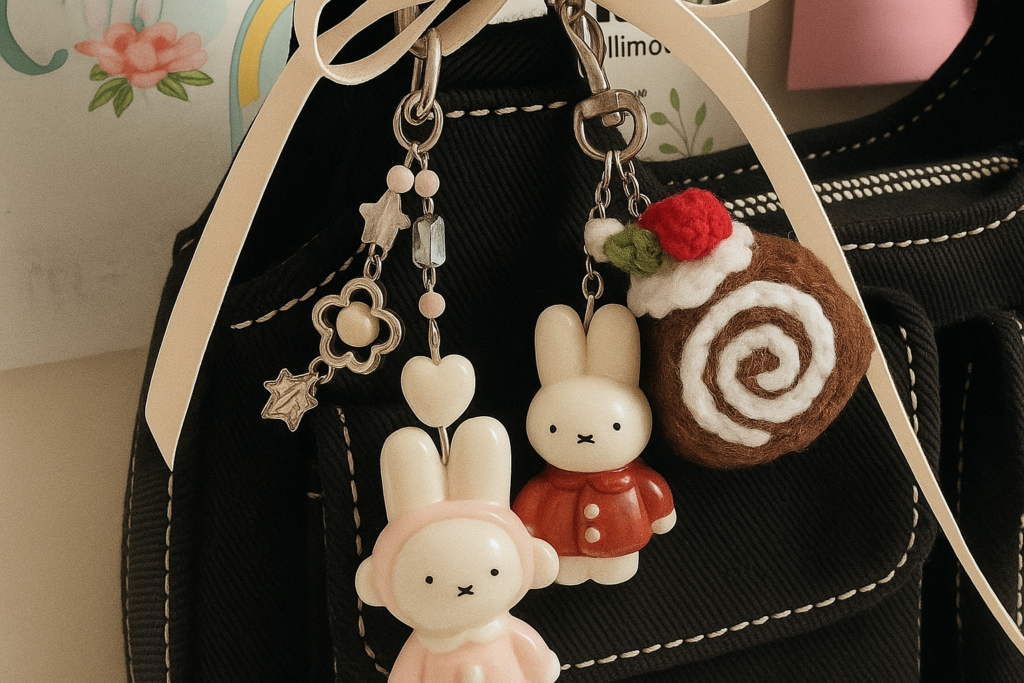
Social and Emotional Value
Keychains are also strongly tied to emotion and memory. Couples often exchange matching keychains as tokens of love, sometimes cute character sets, other times engraved metallic charms that symbolize permanence. For friends, they serve as mementos of shared experiences, like buying matching souvenirs during a school trip or exchanging charms as graduation gifts.
This emotional connection is amplified by the Korean culture of small but meaningful gift-giving. In workplaces, friends might give keychains as inexpensive yet thoughtful birthday presents. Parents often buy character keychains for children as rewards. Even tourist keychains from local markets carry symbolic weight, representing not just the place visited but the memory of the trip itself.
Keychains are also surprisingly democratic: whether purchased for a few thousand won at a roadside stand in Dongdaemun or as part of a premium designer collaboration at a luxury boutique, they appeal across social and economic groups. This accessibility makes them one of the few lifestyle accessories that bridge Korea’s consumer spectrum, uniting people under the shared joy of small, collectible items.
The Collectors’ Craze
Beyond daily use, Korea has embraced keychains as collector’s items. The rise of blind boxes, where buyers don’t know which design they will receive, has created an atmosphere of excitement, surprise, and social exchange. Shops like Artbox or specialty pop-up stores often release seasonal blind box collections, and lines of eager fans form to secure the latest drop.
This randomness fuels community interaction: people trade duplicates online through KakaoTalk groups, Instagram pages, and resale platforms. Rare designs can fetch several times their retail price, creating a thriving micro-economy not unlike the trading culture around K-pop photocards. In fact, some collectors store their most precious keychains in acrylic display cases, turning them into curated collections that blur the line between everyday accessories and art pieces.The collector’s culture is particularly strong among Gen Z and younger millennials in Korea, who value the thrill of discovery and the social connections formed through trading. The act of opening a blind box becomes more than just a purchase, it’s an event, often shared live on social media, reinforcing the communal aspect of the hobby.
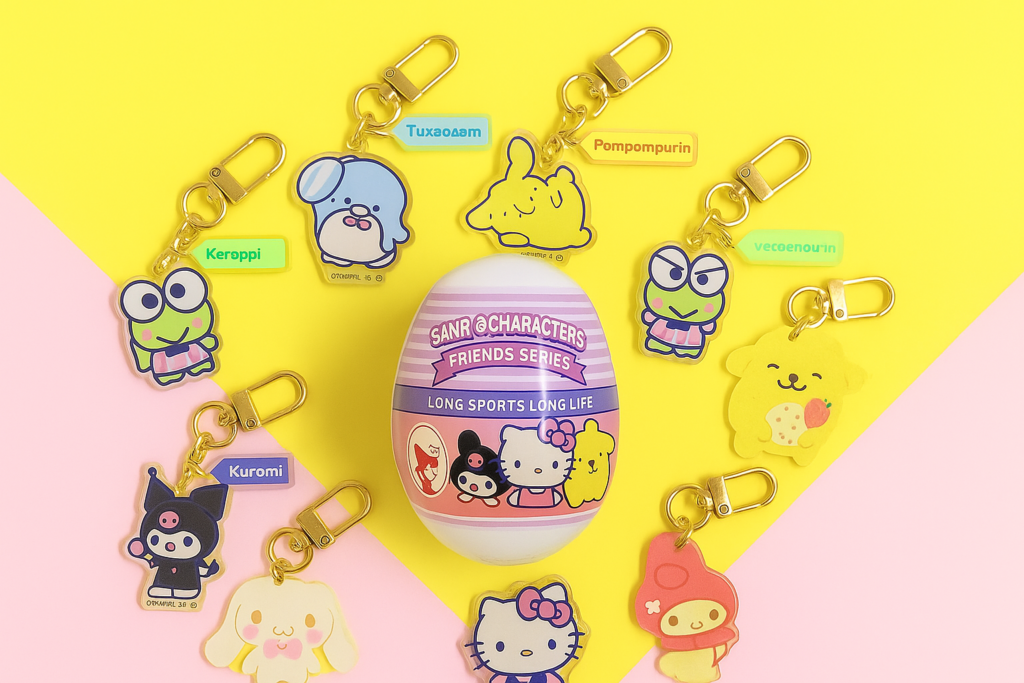
The Case of Labubu
One of the most striking examples of this phenomenon is Labubu, the mischievous monster character designed by Hong Kong artist Kasing Lung and produced by POP MART. With its wide eyes, toothy grin, and quirky personality, Labubu has become a breakout hit in Korea. Despite not being a domestic creation, it resonates strongly with Korean consumers’ taste for playful, slightly eccentric designs.Labubu keychains, usually sold in blind boxes, are especially sought after. Shops in Seoul, particularly in trendy districts like Gangnam and Hongdae, have reported long lines whenever new Labubu collections launch. Fans often wait hours just for a chance to secure one, and the resale market on local platforms like Karrot Market or global ones like eBay sees prices skyrocket for rare editions.
The craze reached an even higher level when Lisa from BLACKPINK dressed up as Labubu during one of the group’s concerts, instantly turning the quirky character into a global sensation. Images of Lisa in the Labubu outfit spread rapidly across social media, making the character even more desirable. For many fans, owning a Labubu keychain after that moment became not only about cuteness and collectability but also about sharing a cultural touchpoint connected to one of K-pop’s biggest stars. The Lisa effect made certain Labubu designs nearly impossible to find in stores, fueling resale prices and further cementing Labubu’s cult-like status in Korea and beyond.

Labubu’s success highlights two important dynamics in Korean consumer culture:
- Openness to Global Characters – Korean consumers are highly receptive to character franchises from abroad if they align with the domestic preference for cuteness, collectability, and quirkiness. Despite fierce competition from local icons like Kakao Friends or LINE Friends, Labubu carved out its own niche.
- The Joy of Playful Consumerism – Buying a Labubu is not just about owning a toy or a keychain; it’s about being part of a community that celebrates fun, whimsy, and surprise. Fans share their finds on Instagram, trade with strangers who quickly become friends, and display their collections proudly.
For many young Koreans, owning a Labubu is a way to participate in a wider global trend while also signaling taste, personality, and belonging within their circle of collectors. It proves how quickly international pop culture icons can embed themselves in Korean daily life, provided they deliver on three essentials: cuteness, collectability, and community value.
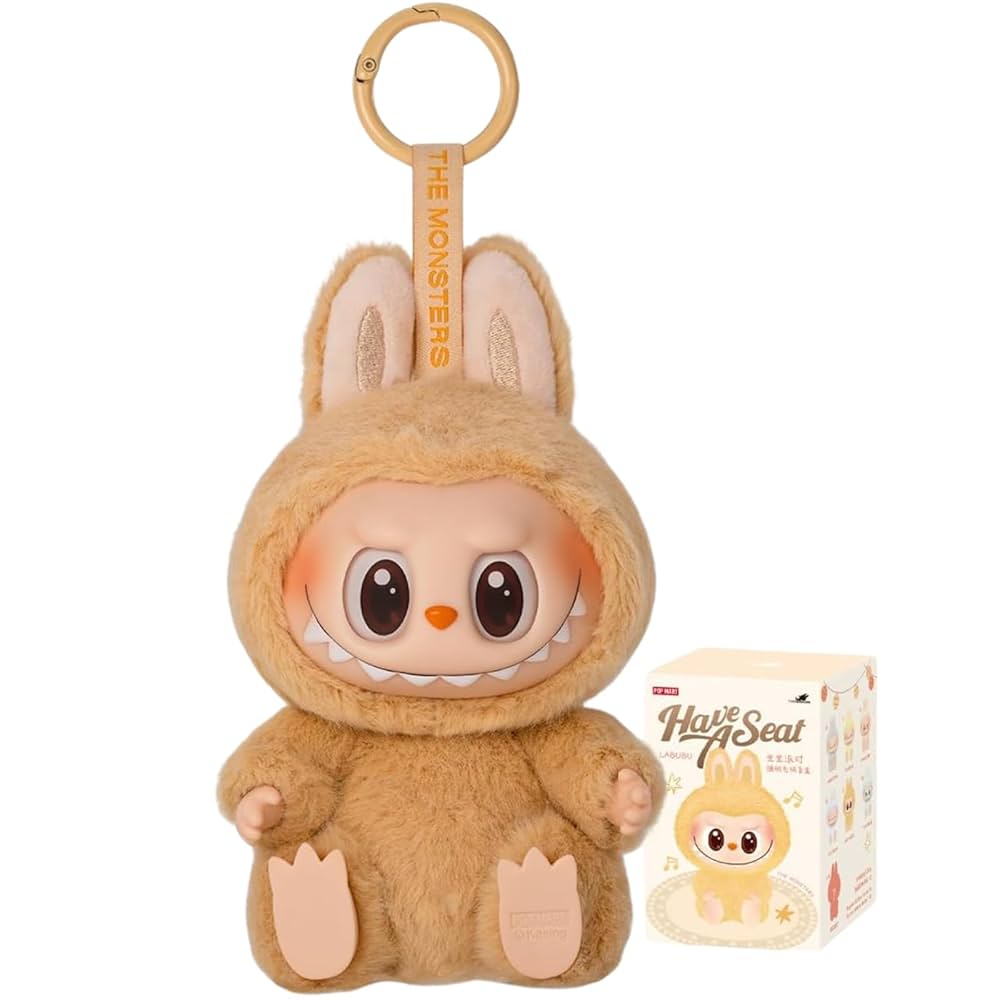
Beyond Pop Culture: Luxury Keychains and Bag Charms
While playful character charms dominate the youth market, luxury fashion houses have also embraced the power of keychains and bag charms. Brands like Fendi, Gucci, and Saint Laurent release their own signature charms that complement their designer handbags, often crafted with premium leather, fur accents, or iconic logos. For many consumers, these charms are more than accessories, they are status symbols that extend the brand’s aesthetic into everyday life. A Saint Laurent tassel charm or a Gucci GG leather keychain can transform a simple tote into a statement piece. In Korea, where luxury consumption is strong and highly visible, these branded charms carry dual value: they accessorize a bag while signaling social identity and taste.
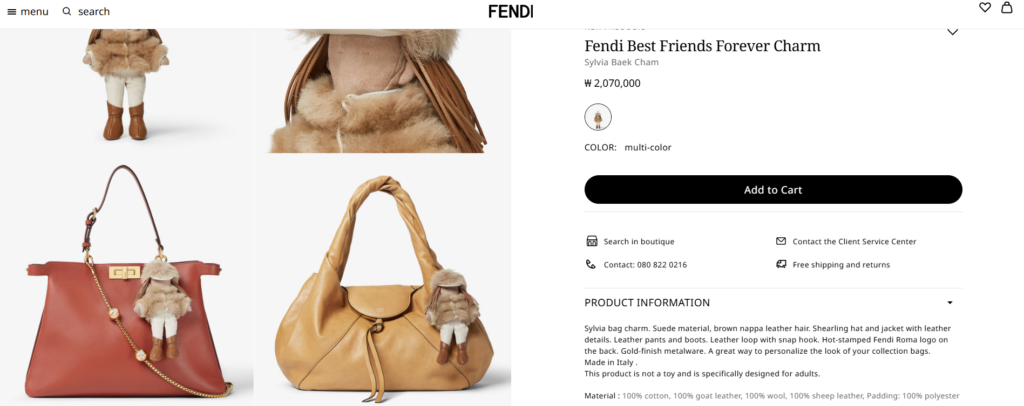
Beyond Keychains: Accessories for Every Lifestyle Object
The keychain phenomenon also intersects with a broader Korean trend: customizing everyday objects with miniature accessories. Shoes often come with clip-on charms: Nike and Crocs have embraced this with interchangeable decorations that let wearers personalize their footwear. Phones, too, are accessorized with dangling charms or decorative cases that function much like keychains, expressing personality while adding aesthetic flair. Even makeup brands release pocket-sized charms or mini versions of lipsticks and cushions designed to hang from bags, merging beauty with playfulness. This crossover between function and decoration reflects Korea’s cultural emphasis on detail, personalization, and making even the most ordinary objects fun, stylish, and socially expressive.

Korea’s Homegrown Keychain Giants
While Labubu has become a sensation, Korea itself is home to some of the world’s most beloved character franchises—and keychains have been central to their global rise.
- Kakao Friends: Born as emoticons for the KakaoTalk messaging app, characters like Ryan (the stoic lion), Apeach (the cheeky peach), and Muzi (the radish in a rabbit suit) quickly escaped the digital screen to dominate physical merchandise. Kakao Friends stores across Seoul often dedicate entire walls to keychains, ranging from soft plush charms to acrylic versions featuring seasonal outfits. For many Koreans, attaching a Kakao Friends keychain is as much a lifestyle choice as a cute accessory—it represents relatability, humor, and everyday companionship.
- LINE Friends: The rival messaging app LINE birthed its own characters, including Brown the bear and Cony the rabbit. LINE Friends stores—especially the flagship in Itaewon—have become tourist destinations, with visitors snapping up exclusive keychains as souvenirs. Collaborations with BTS (through BT21) catapulted LINE Friends into global fame, and BT21 keychains are now staples at K-pop concerts worldwide. Fans proudly display them on backpacks, luggage, or even as car accessories, blending fandom identity with everyday style.
- BT21: Created in collaboration between LINE Friends and BTS, BT21 is arguably Korea’s most successful keychain franchise on the global stage. Each BTS member designed a character, from Tata (V’s alien heart-shaped figure) to Cooky (Jungkook’s muscular pink bunny). BT21 keychains sell out almost instantly upon release, with international fans buying them at pop-up stores in New York, Tokyo, Paris, and beyond. For many fans, owning a BT21 keychain is not just about cuteness—it’s about carrying a piece of BTS’s creativity and identity everywhere they go.
These domestic successes reveal a uniquely Korean talent: transforming digital-born characters into tangible lifestyle icons. What starts as a sticker or emoji in a chat app becomes a physical companion dangling from your bag, carrying emotional resonance and cultural weight. Together, Labubu’s global crossover and Korea’s homegrown icons illustrate the dual power of the keychain market in Korea: it’s both open to outside influences and capable of exporting cultural products worldwide.
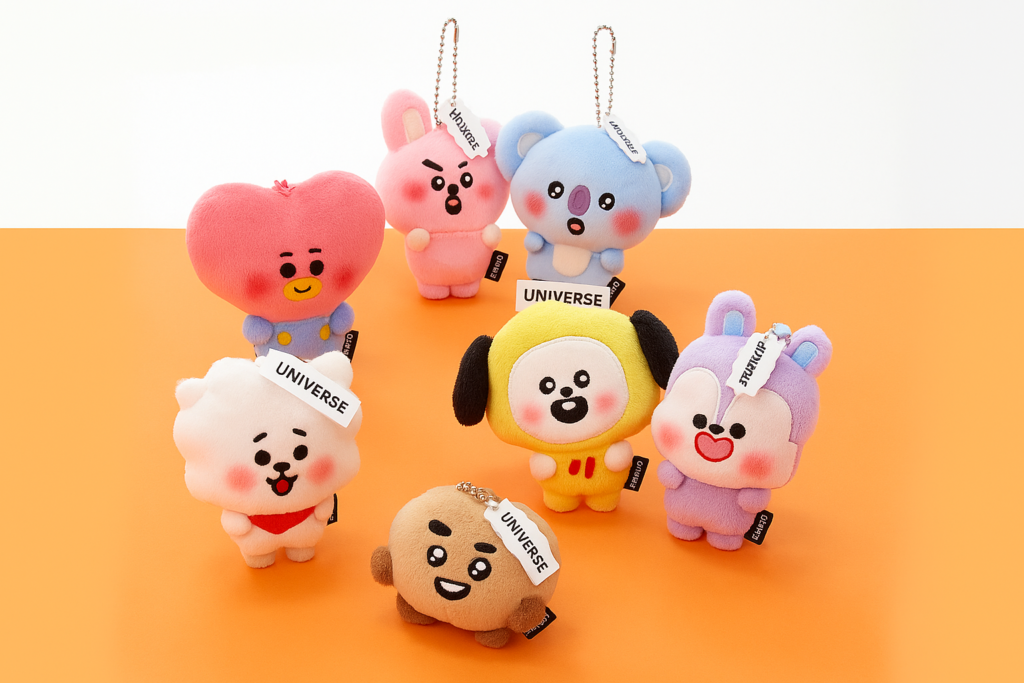
A Marketing Vision: Tiny Items, Big Impact
The popularity of keychains in Korea holds a powerful lesson for brands: small objects can have massive cultural influence. For companies, keychains are more than novelty goods—they’re entry points into lifestyle branding. Whether attached to a bag, a phone, or a wallet, keychains function as mini billboards that travel everywhere with their owners, sparking conversations and visibility in everyday life.
For marketers, this creates opportunities in several ways:
- Collaboration potential: Fashion houses, K-pop agencies, cafés, and even cosmetics brands can launch collectible keychains as extensions of their core products.
- Limited editions & scarcity marketing: Blind boxes, exclusive drops, and event-only designs tap into the psychology of rarity and the thrill of discovery.
- Community-building: Encouraging trading and sharing through fan events or digital platforms strengthens customer loyalty and word-of-mouth buzz.
Sustainable merchandising: Eco-friendly or upcycled materials can appeal to Korea’s increasingly conscious consumers while keeping the playful charm intact.
Marketing Lessons from Korea’s Homegrown Keychain Icons
Korea’s keychain culture is not just about cuteness, it’s a masterclass in strategic merchandising and lifestyle branding. Companies like Kakao, LINE Friends, and BTS with BT21 have leveraged keychains to build not only revenue streams but also emotional bonds with consumers.
- Turning Digital Characters into Tangible Brands – Kakao Friends, LINE Friends, and BT21 transformed digital stickers into physical products that fans could collect, display, and carry everywhere. Keychains became lifestyle symbols, making brand engagement part of daily life.
- Scarcity and Exclusivity Drive Demand – Limited releases and seasonal variations create urgency and hype. Fans queue for hours, share unboxing moments on social media, and engage in trading communities. This replicates the blind box phenomenon, enhancing loyalty and perceived value.
- Keychains as Mini Billboards – Each charm is highly visible, social, and shareable. Fans become walking promoters, organically spreading brand awareness without traditional advertising.
- Global Expansion through Lifestyle Integration – BT21 keychains are sold worldwide as cultural artifacts, while Kakao Friends partners with international cafés and stores. These small objects carry stories, fandom pride, and Korean creativity across borders.
- Community and Emotional Engagement – Unboxing, trading, and collecting keychains fosters communities, strengthens emotional attachment, and transforms consumers into advocates, giving brands long-term engagement opportunities.
Key Takeaways for Brands
Whether you are a global company entering Korea or a Korean brand expanding abroad, the keychain phenomenon demonstrates that small, affordable objects can wield outsized cultural and commercial influence.
- For global brands in Korea, keychains can act as entry-level lifestyle products—affordable, visible, and highly shareable. Collaborations with local artists, pop culture icons, or K-pop idols can drive both sales and community engagement.
- For Korean brands abroad, keychains can be exported as portable cultural ambassadors, carrying stories, emotions, and fandom pride to new markets. Strategic collaborations, limited editions, and community-building campaigns maximize both revenue and brand loyalty.
In short, the humble keychain is more than a trinket—it’s a gateway to identity, culture, and global influence. Korea’s keychain icons, from Kakao Friends and LINE Friends to BT21 and the Labubu craze, demonstrate how a small, well-designed object can become a powerful marketing and cultural phenomenon.
Future Trends: Where Korea’s Keychain Culture is Headed
Korea’s keychain culture illustrates how small, everyday objects can wield outsized cultural, social, and commercial influence. From Labubu’s global crossover to Kakao Friends’ domestic dominance, keychains have become platforms for storytelling, identity, and fandom.
For brands—both Korean and international—the lesson is clear: investing in keychains isn’t just about merchandise; it’s about creating portable experiences, community engagement, and emotional touchpoints. As technology, sustainability, and global fandom continue to shape consumer expectations, keychains are poised to remain a powerful and dynamic tool in lifestyle branding, cultural diplomacy, and international marketing.
Curious about our services ? Contact us at insight@asiance.com to craft innovative marketing strategies and engaging brand experiences that resonate with your audience!



